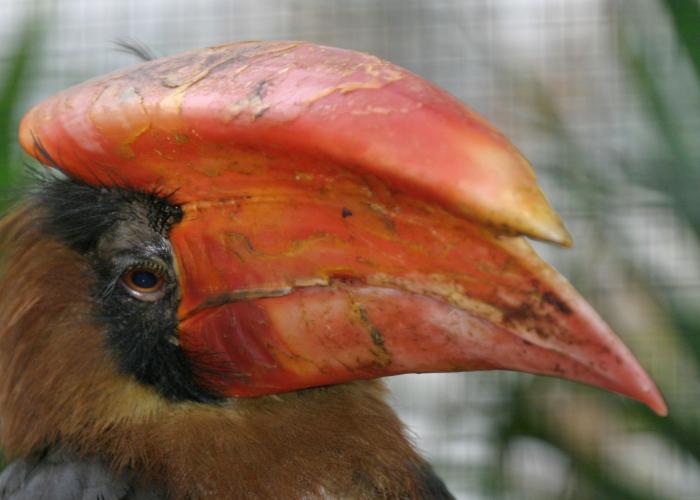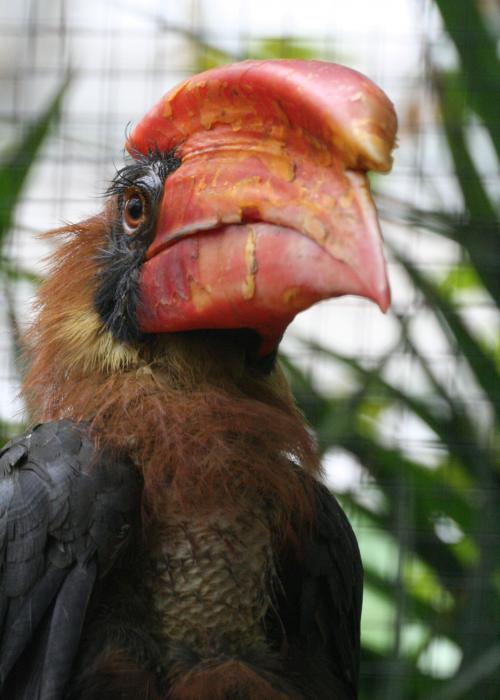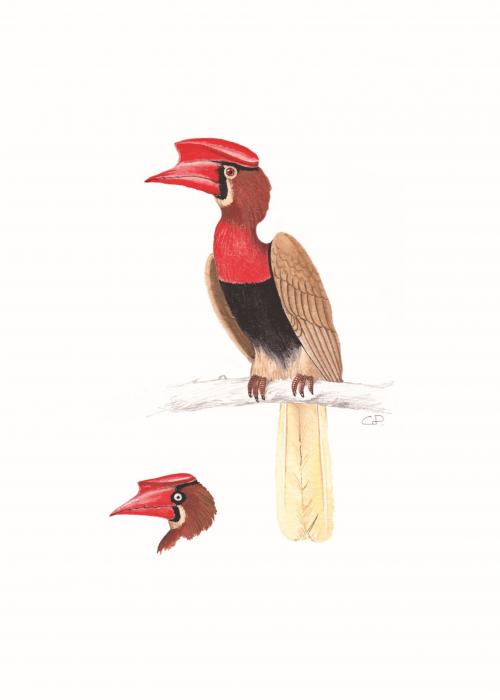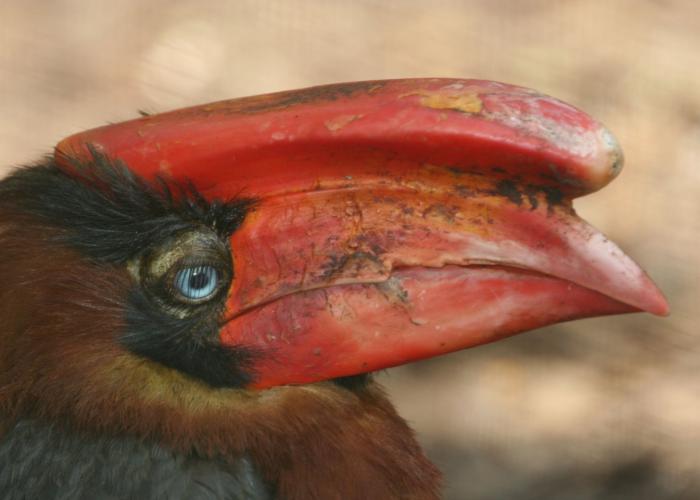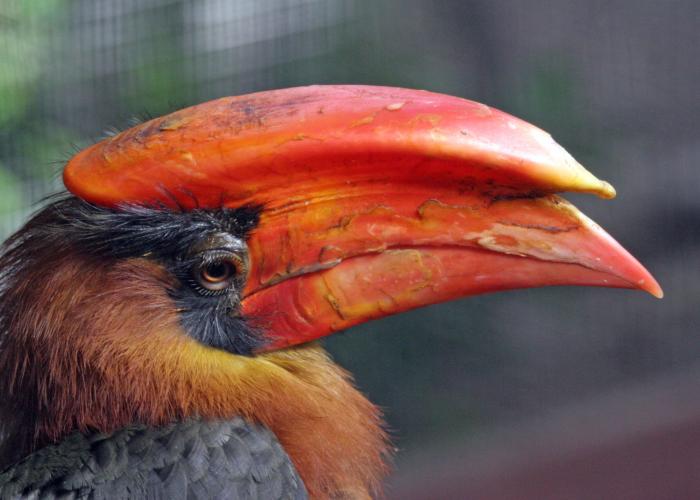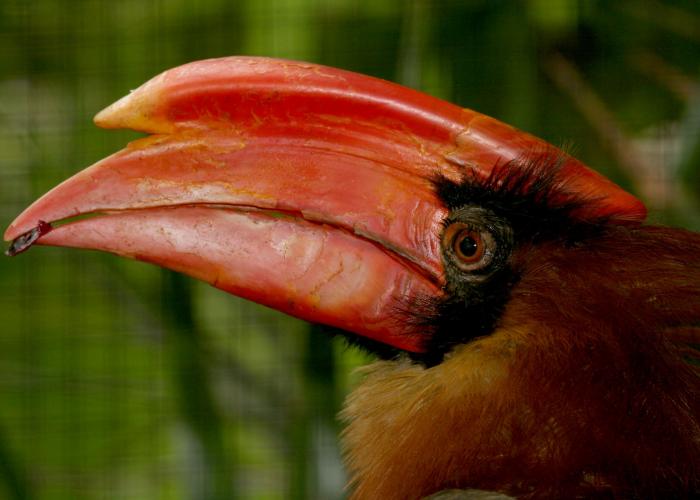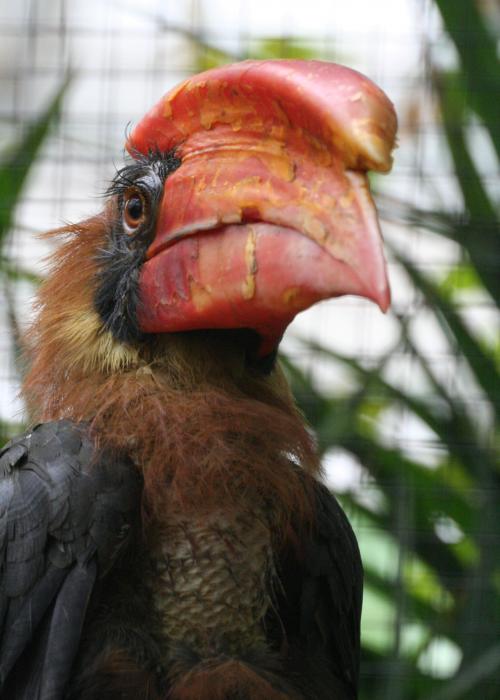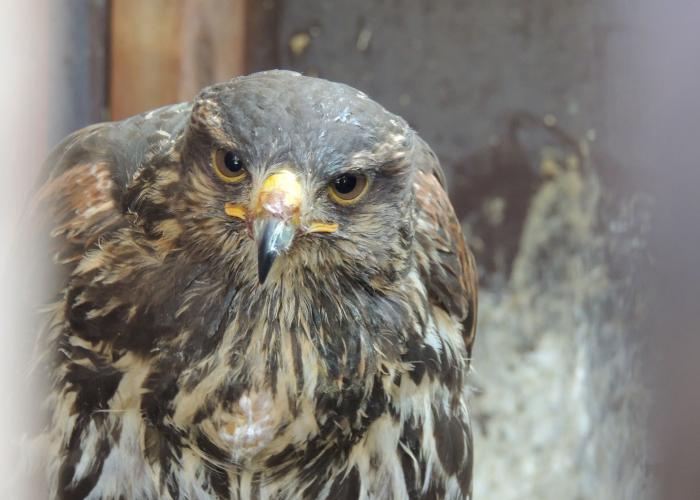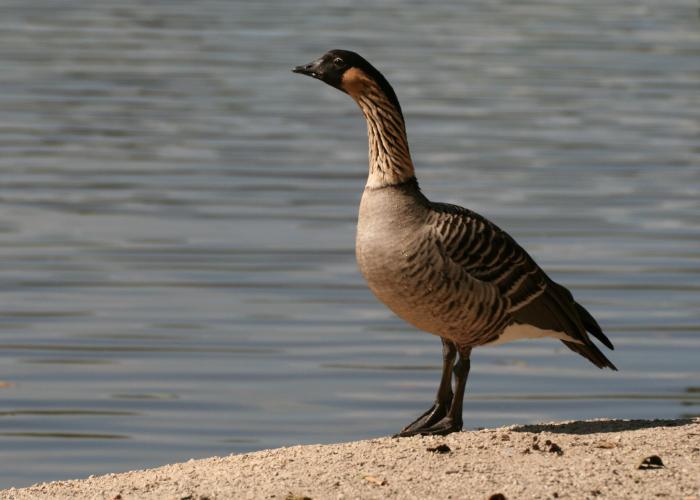Rufous Hornbill
The species has declined because of deforestation
This large hornbill, endemic to the Philippine Islands, has beautiful red, black and brown plumage. But it has, like all hornbills, a big red beak that carries an impressive casque of the same colour and part of its skull.
It lives in the primary and secondary forests of about a dozen islands of the archipelago, feeding on insects which it often catches in flight, small vertebrates as well as on fruit.
As with most hornbills, when breeding-season starts, the female is literally imprisoned in a tree-cavity, the entrance to which is sealed by the couple – except for a small opening – by means of a solid coating like plaster. The female is completely dependent upon the male during the two months of imprisonment, while incubating and raising the chicks. Once fledglings get too big, the female will leave the nest and both adults continue to feed the young until they leave the nest.
The species has considerably declined during recent decades because of deforestation.
Two Rufous Hornbills
A male and a female
A "near threatened" species
- Name : Rufous Hornbill
- Latin name : Buceros hydrocorax hydrocorax
- Origin : The Philippines
- IUCN status : Near threatened
- Cites : Appendix II
